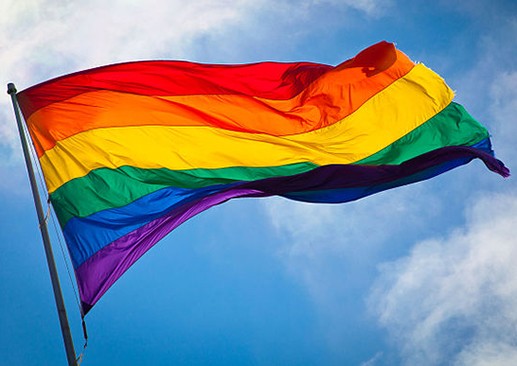For a company like Ben & Jerry’s, social responsibility is part of its overall brand. The ice-cream maker is known for its progressive stances and isn’t afraid to speak out, which is one reason the company has a loyal fan base.
Due to the increasing visibility of social, environmental and other progressive movements, more corporations are following Ben & Jerry’s lead by adopting Corporate Social Responsibility (CSR) policies within their organizations to outline their values and the action steps that their companies will take to help address pressing local and global issues.
However, they’re not only doing it to make an impact in the world; they know that being “socially responsible” could mean increased profits. This corporate and social “golden mean” can be beneficial to both corporations and society overall if done correctly.
Consumers become loyal to brands that align to values that are important to them, and can easily drop brands that deviate from those values. 77% of consumers are motivated to purchase from companies that want to make an impact, according to Harvard Business School. Therefore, success in the implementation of an organization’s CSR strategy can be a bold marketing and public-relations tool. And companies are acknowledging the power of CSR reporting. In 2019, 90% of companies in the S&P 500 produced a CSR report, up from 20% in 2011.
Standards Organizations for Corporate Social Responsibility Reports
Some countries such as India, the U.K., and Denmark have mandatory company CSR recognition and/or reporting of some kind, but CSR is not required in the U.S., only encouraged by agencies such as the Securities and Exchange Commission.
Some organizations that provide reporting standards and guides for companies include:
The Value Reporting Foundation produces the SASB standards using environment, social, and governance (ESG) subsets, to report financially material sustainability information to investors and shareholders. It helps companies measure the financial impact of their sustainability efforts.
The Global Reporting Initiative (GRI) is an independent global standards body that provides guides to companies on writing reports using universal, sector, and topic standards. The organization informs companies about their societal and environmental impacts to assist them with writing sustainability reports.
B Labs is a certification body which recognizes businesses that possess the high quality environmental, social, legal, and transparency standards. Businesses that apply for the certification and meet the organizations’ verification requirements and assessment are awarded the designation of “Certified B Corporation” or “B Corp.” There are currently more than 3,500 B Corps in over 70 countries.
The New York Stock Exchange provides resources and guidance to corporations on effective ESG as well as reporting and disclosure standards.
Components of Corporate Social Responsibility
According to the Corporate Finance Institute, CSR falls into four areas of responsibility: environmental, human rights, philanthropic, and economic.
Environmental responsibility includes using sustainable resources, effective and ethical natural resource management, and reducing pollution and the emission of greenhouse gases.
Human-rights responsibility includes fair labor practices such as fair wages and benefits, safe working conditions, workplace diversity, inclusion, and equity practices, avoiding child labor, and using fair-trade practices.
Philanthropic responsibility includes giving back to the community through funding the improvement of community institutions, infrastructure, and initiatives such as education, arts, public health and parks, and fostering a workplace culture of community service and volunteerism.
Economic responsibility is how corporations can maintain a goal of maximizing profits and shareholder value while upholding the above responsibilities.
Reading a Corporate Social Responsibility Report:
“We know that the credibility of a track record matters. And that’s not only ‘How many posts did you put out?’ or ‘Did you create a nice film that made everybody well up?’ It’s being there, being there, being there,” Matthew McCarthy, CEO of Ben & Jerry’s told Harvard Business Review.
Usually, the first part of a CSR report is the letter from the CEO, which provides an overview of the company’s commitment to social responsibility. A strong CEO letter will communicate the challenges a company faces when trying to address the social and environmental impact it might have in its operations or outside of its operations, and how it plans on addressing those challenges. It would outline the future goals set by the company, how it plans to accomplish those goals and indicate past achievements. If a letter lacks specifics and the wording is generalized, it could show the company doesn’t have a clear path on how it plans to attain its social responsibility goals.
The key facts and figures section provides the most pertinent information about a company’s CSR strategy and accomplishments. This section makes it easier to look at key information without needing to dig deep into reports, but sometimes the summary can omit important context.
For example, in Warby Parker’s CSR report, the brand highlighted, on one of the first pages, more than 3,250 hours of volunteer work by their employees in 2020. However, as the company has 2,490 employees, that amounts to just 1.3 volunteer hours per employee for the year. That’s despite the fact, mentioned deeper in the report, that Warby Parker gives each employee 16 hours of paid leave to volunteer each year. So why would Warby Parker choose to highlight these numbers up front when they say very little? Odds are that most readers won’t read deep enough to put those connections together.
A good report will have visual data to illustrate achievements or provide goals. While anecdotes can be useful in providing insight and added context, using data to substantiate or illustrate a claim or achievement provides added value to a report.
Additionally, a company’s report should address both its positives and negatives. No company is perfect, and only including positives on a report is an issue of concern as it might be due to avoidance of discussing a problem, or to mislead or cover up those problems. A company should highlight its achievements while acknowledging any obstacles they encountered along with plans for rectification.
External Assurances
Increasingly, companies are turning to outside auditors for validation of their CSR reports, such as the Big Four accounting firms – Deloitte, Ernst & Young, PricewaterhouseCoopers, and KPMG. These assurance statements verify the accuracy and reliability of the information, akin to an auditor’s statement on financial accounts. According to a 2018 sustainability assurance report by the American Institute of Certified Public Accountants, 67% of the top 250 global companies use external assurance, up from 29% in 2002.
The Big Four, in partnership with the World Economic Forum, released an ESG reporting guide, “Stakeholders Capitalism Metrics,” which provides an expanded core set of metrics and disclosures based on existing framework, at the 2020 Annual Meeting in Davos. The ESG reporting framework has so far been adopted by 120 companies.
In addition, comparing the claim of a company in its report to outside research can help give insight to what’s real and what’s merely PR. In its 2020 report, the tobacco company, Philip Morris International, touted that out of the 17.5 million adult users of its IQOS devices, 12.7 million stopped smoking. The devices are marketed as a smoke-free safer alternative to smoking, as it heats tobacco to release nicotine instead of burning it which allows the user to more safely inhale the vapors, the company says. In his letter, Philip Morris International’s CEO André Calantzopolous reaffirmed his company’s “commitment to deliver a smoke-free future,” and to “replace cigarettes with better alternatives.”
Outside research, however, suggests that using products like IQOS is still harmful. Heated devices still release nicotine and other cancer-causing chemicals that can harm both the user and bystanders, according to the Centers for Disease Control. In 2020, researchers at the University of California San Francisco’s Center for Tobacco Control Research who looked at Phillip Morris’s own data on IQOS, found that it is “associated with significant pulmonary and immunomodulatory toxicities with no detectable difference between conventional cigarette smokers and those who switched to IQOS.”
Examples of Good CSR Reports
Here are some examples of CSR reports from companies that are widely known to have relatively good social responsibility standards. The reports provide the information and data visualization elements discussed above:
Though these are examples of good reports as far as the components included, scrutinizing the information within the report, especially comparing the CEO letter to the data, is important in determining if the company is being earnest or if they are merely appeasing consumer interests to maintain profit.
For additional information on how to read CSR reports, you can visit: Harvard CSR Guide and Greenbiz.











